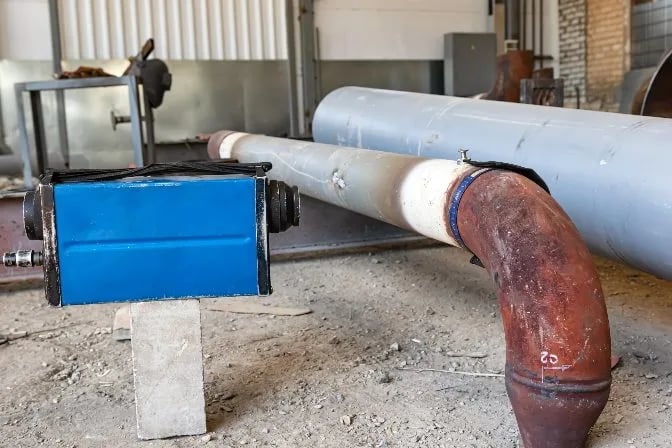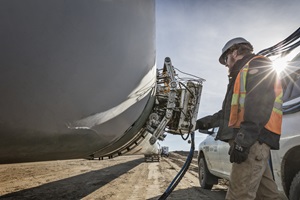Professional Pipeline Welding Inspection Solutions: Ensuring Security and Compliance
Professional Pipeline Welding Inspection Solutions: Ensuring Security and Compliance
Blog Article
Comprehensive Summary of Pipe Welding Assessment Procedures
Pipe welding assessment procedures play a critical function in guaranteeing that bonded connections satisfy stringent industry requirements and requirements. From meticulous pre-welding examinations to extensive post-weld analyses, a distinct evaluation process is important for preserving the architectural strength of pipes.
Pre-welding Evaluation Preparations
Before commencing the welding process, detailed pre-welding examination preparations are crucial to make sure the honesty and high quality of the weld joint. These prep work involve a meticulous evaluation of the materials to be welded, the welding tools, and the work environment. By conducting thorough pre-welding inspection preparations, possible problems can be recognized and solved early on, leading to reputable and high-quality weld joints.
Welding Treatment Qualification
Comprehensive pre-welding evaluation prep work lay the structure for the essential procedure of Welding Procedure Credentials, ensuring the honesty and quality of the weld joint. Welding Treatment Credentials (WPQ) is a vital action in the welding process that includes screening and certifying welding treatments to assure they satisfy certain criteria and needs. The WPQ procedure usually consists of welding procedure spec growth, welding procedure qualification testing, and paperwork of the results.
During welding procedure spec advancement, important details such as the welding process, welding materials, joint layout, and welding criteria are defined to develop a thorough treatment. Consequently, welding procedure qualification screening is performed to validate the recommended treatment's stability. This testing often involves welding examination vouchers that go through numerous mechanical and non-destructive tests to analyze the weld's high quality and adherence to the defined criteria.
In-process Weld Evaluation
During the welding procedure, in-process weld examination plays a critical duty in making certain the quality and integrity of the weld joint - Pipeline Welding Inspection. This kind of assessment involves keeping an eye on the welding specifications, evaluating the weld bead formation, and detecting any possible issues or discontinuities as they occur. By performing in-process weld evaluations, welding operators can promptly deal with any concerns that may emerge, consequently protecting against additional issues and making certain that the last weld fulfills the called for specs
Usual methods used for in-process weld examination include aesthetic assessment, liquid penetrant screening, magnetic fragment testing, ultrasonic screening, and radiographic screening. On the whole, in-process weld assessment is vital for maintaining the top quality and reliability of bonded pipelines.
Non-destructive Testing (NDT)
Non-destructive Testing (NDT) is an essential technique utilized linked here in pipeline welding inspection to examine the stability of weld joints without causing damages to the welded framework. By utilizing numerous NDT techniques, examiners can evaluate the top quality of welds and identify any issues or discontinuities that may jeopardize the structural sturdiness of the pipe. Usual NDT methods made use of in pipeline welding evaluation consist of Radiographic Testing (RT), Ultrasonic Testing (UT), Magnetic Bit Testing (MPT), Liquid Penetrant Screening (LPT), and Visual Testing (VT)
RT entails the use of X-rays or gamma rays to create photos of the interior framework of the weld, permitting inspectors to discover problems such as porosity, splits, or incomplete combination. UT utilizes high-frequency sound waves to discover problems beneath the surface area of the weld, providing in-depth details about the dimension and area of issues. MPT and LPT are utilized to recognize surface-breaking problems by using penetrant fluids or magnetic particles to the weld area. Furthermore, VT includes visual evaluation of welds to identify any kind of visible flaws.
Post-weld Inspection and Paperwork


Documentation of post-weld examination searchings for is necessary for maintaining quality assurance records and guaranteeing compliance with market criteria and guidelines. Comprehensive reports must consist of info regarding the inspection approaches utilized, the location and nature of any problems discovered, and any restorative actions taken - Pipeline Welding Inspection. Correct documentation not only acts as a document of the weld's high quality yet also aids in future maintenance and examination processes
Conclusion

To conclude, pipe welding assessment procedures play a vital function in making certain the high quality and stability of welds. From pre-welding assessments to post-weld documentation, each action is vital in maintaining the security and read here performance of pipes. By adhering to well established procedures and conducting extensive inspections, prospective flaws can be recognized and attended to prior to they cause expensive repairs or failings. In general, adherence to correct examination go to website protocols is crucial to the success of pipeline welding jobs.
From meticulous pre-welding examinations to thorough post-weld assessments, a distinct inspection procedure is crucial for keeping the structural soundness of pipelines. By performing in-process weld evaluations, welding operators can without delay attend to any kind of concerns that may emerge, thereby preventing additional flaws and making certain that the final weld satisfies the called for specs.
Typical methods used for in-process weld evaluation consist of aesthetic inspection, liquid penetrant screening, magnetic bit screening, ultrasonic testing, and radiographic screening.Non-destructive Screening (NDT) is a vital approach employed in pipeline welding examination to analyze the integrity of weld joints without causing damages to the bonded framework. Post-weld inspection involves numerous methods to analyze the welds for issues, consisting of aesthetic examination, color penetrant testing, magnetic bit testing, ultrasonic testing, and radiographic screening.
Report this page